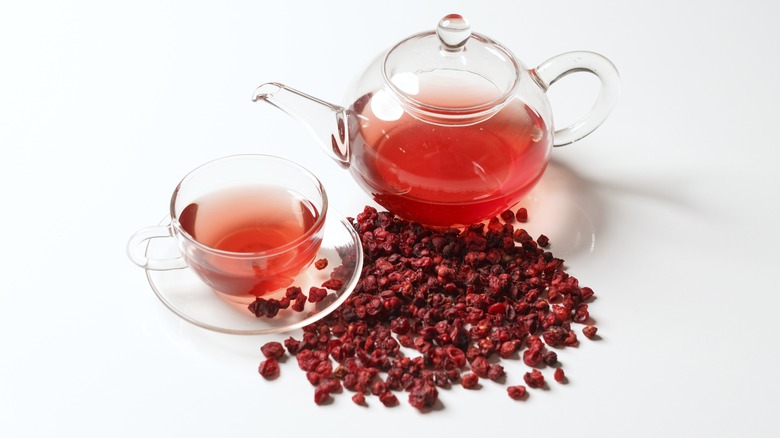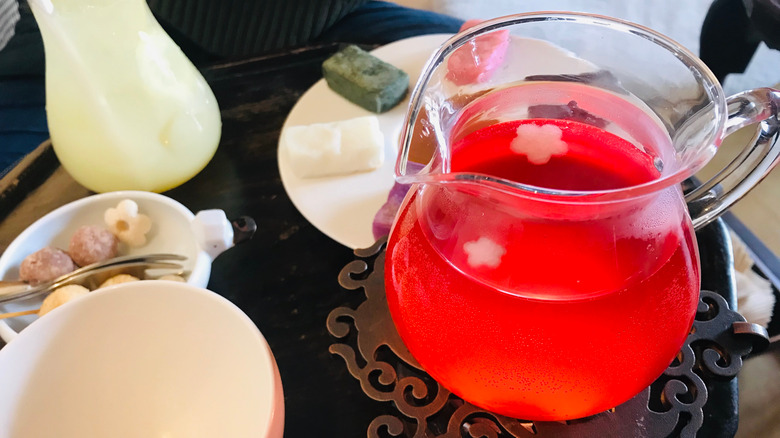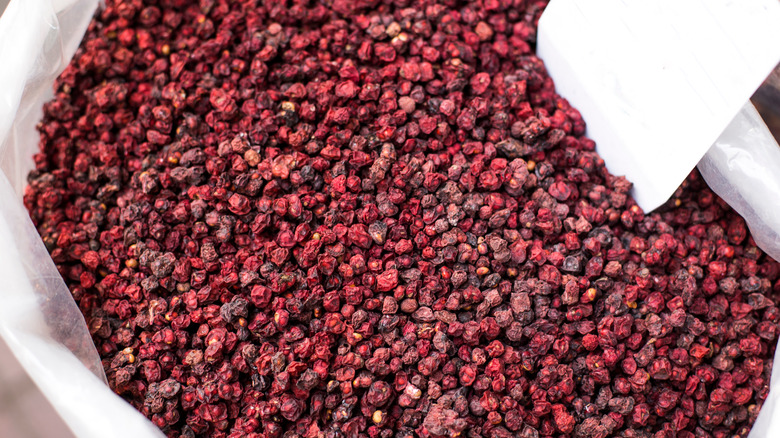Omija Tea Packs All 5 Basic Flavors Into One Ingredient
The world got its first taste of tea in 2737 BC when a leaf of the Camellia sinensis tree mistakenly fell into a pot of boiling water meant for the Chinese Emperor Shen Nung. The accidental drink soon caught the fascination of Chinese citizens, who began to sip it every day; the Portuguese and the Dutch who took tea back to Europe; the British who began to grow their own tea plantations in India; and Buddhist monks who took the leaves to Korea where tea is now as common a beverage as water.
There are hundreds of teas in Korea, which can all be separated into four broad categories: medicinal, grain, tea leaf, or fruit. While each category has dozens of fascinating teas in it, the fruit teas are quite unlike any other. There are tangy teas brewed with fruit marmalade and colorful ones brewed with tart pomegranate seeds and sweet plums. In fact, there's even a tea that is known to pack all five flavors in one beverage: the omija-cha or five flavors tea.
Brewed with dried, vibrant red omija berries, omija-cha tastes sweet, salty, bitter, sour, and pungent at the same time. The five-flavored tea is drunk hot or cold, plain or sweetened with honey or sugar, and enjoyed for both its taste and health benefits.
Omija tea is popular for its health benefits
Omija tea is brewed from the fruits of the Schisandra chinensis which are known as Schisandra berry or simply five flavor fruits. The purplish red berries themselves taste sweet, salty, sour, bitter, and pungent and the tea brewed from them has the same medley of flavors. The uniqueness of the five-flavored ingredient makes omija tea extraordinary, but the main reason for its popularity in Korea is the fruit's many health benefits.
A study published in the European Journal of Pharmacology found that Schisandra berry's anti-inflammatory and neuroprotective properties may help with Parkinson's and Alzheimer's diseases. The fruit also contains antioxidants that may help protect against liver damage as well as ease symptoms like hot flashes and heart palpitations during menopause. Research has linked Schisandra berries to antidepressant properties, and it's also believed to be an adaptogen that could help with stress and anxiety.
Traditional Chinese Medicine (TCM) also finds Schisandra berry to be excellent for qi — the vital force or energy that is found in every living creature. It is believed that qi that is out of balance or not present in sufficient amounts will lead to health ailments and diseases. A good dose of Schisandra berry helps keep one's qi in a harmonious balance meaning, so a cup of omija-cha is essential for general well-being.
How to brew omija tea
Named after the Korean word for five flavors, omija tea can be drunk hot, though in Korea, a colder or room-temperature brew is preferred. This is because Schisandra berries begin to become more bitter at temperatures higher than 113 degrees Fahrenheit so a hot version often tips the delicious balance of omija tea's five flavors if not brewed carefully.
To make a cup of omija tea that will have a balance of all five flavors, Schisandra berries are steeped in cold water overnight. The berry infusion is then strained and sipped while it's still cold or at room temperature. When making a batch of omija tea at home, a ratio of about .42 ounces of Schisandra berries for every quart of water will make a well-balanced brew, though you can play with the amount of berries per your taste. Depending on how many berries you use, the color of omija tea may range from an intense reddish pink color to a lighter orange in a weaker brew.
Additionally, while the tea has enough flavor as it is, a touch of honey or sugar can sweeten the drink and small chunks of Korean pears can add a bit of crunch to it. If you've managed to spot a bag of Schisandra berries at an Asian or Korean grocery store, don't stop at just tea to use the five-flavor berries — it makes excellent fruit punches and cocktails too!



